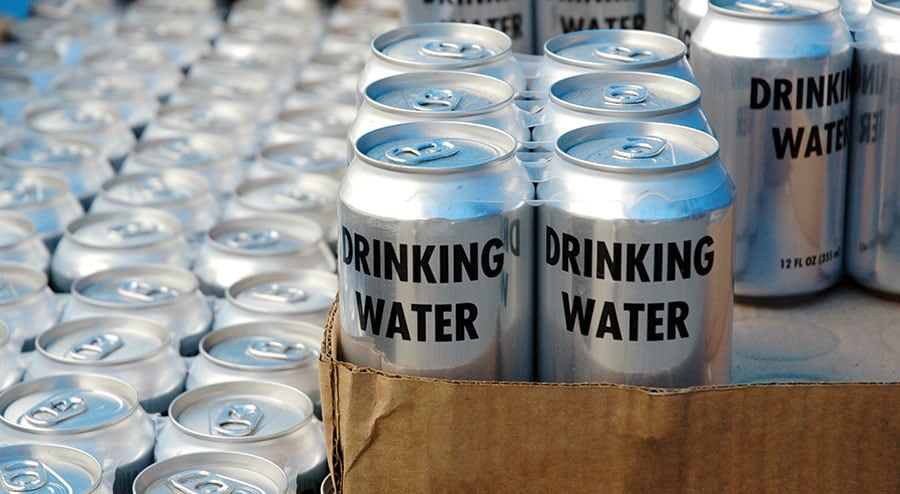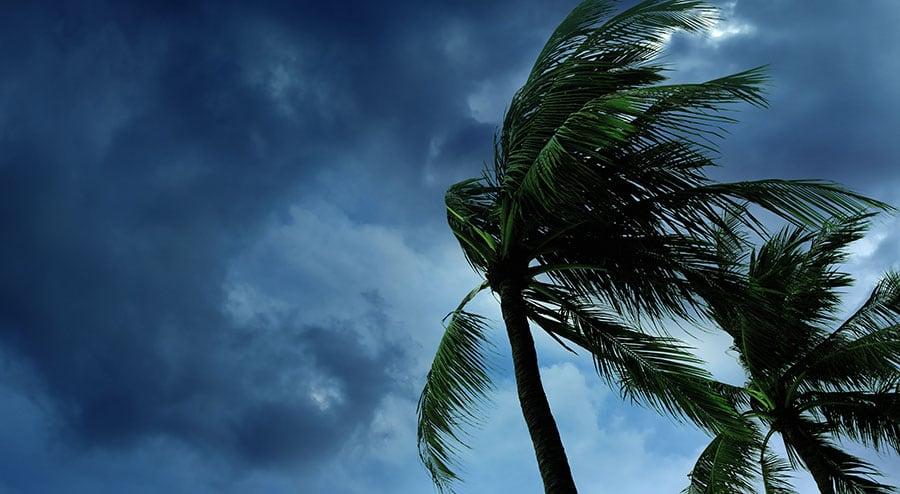Thousands of Americans are evacuated from their homes every year due to events such as industrial accidents, fires, floods, tornadoes, earthquakes, and hurricanes. According to the Federal Emergency Management Agency, FEMA, “many disasters allow no time for people to gather even the most basic necessities.” This problem is compounded by a lack of preparation. Out of those who responded to a recent FEMA survey, only 39 percent had created an emergency plan and talked about it with their households. If you want to be safe during a natural disaster, however, you need to plan ahead. Here are some tips that will help you prepare.
Know What You Might Face
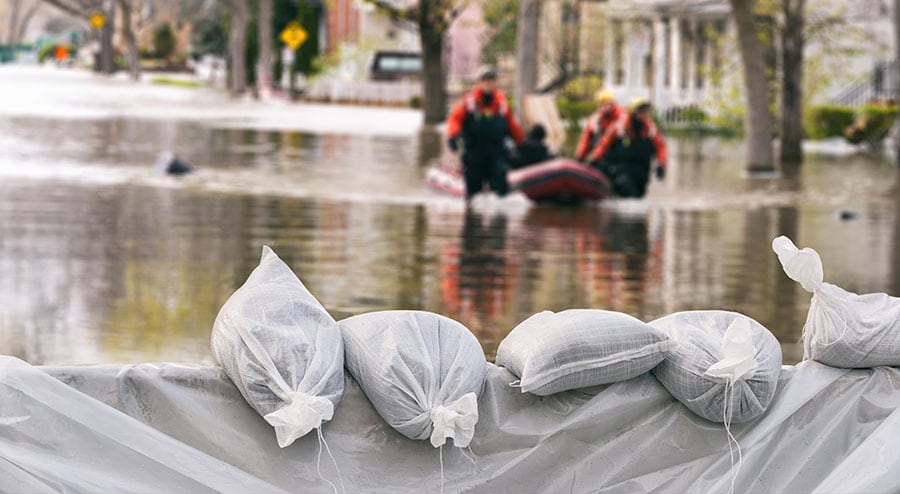
An important part of preparedness is knowing what type of disasters you might face and knowing what to do in every plausible situation. Do you live in Nebraska? While you likely won’t deal with a hurricane, you should prepared for tornadoes. Familiarize yourself both with the disaster risks that are specific to your area of the country and with those that can occur anywhere. Here’s a list to consider:
- Weather-related disasters can strike almost anywhere. Coastal areas should be on guard against hurricanes and tsunamis, but winter storms, thunderstorms, tornadoes, and extreme heat can strike in much of the United States.
- Geography can also be a factor. Low-lying areas are susceptible to flooding, and while any area can be subject to a tornado, they’re more prevalent and more destructive in flat landscapes. Even if you’re close to a dormant volcano, there is still a risk, and earthquakes often happen close to fault lines.
- Local conditions can make certain places particularly at risk from disasters such as landslides and wildfires.
- Industrial accidents like chemical spills and other emergencies are a possibility for those living close to industrial sites. Try to be aware of factories, refineries, and other industrial activity in your community.
Create a Plan and Practice It

Developing a disaster preparedness plan requires you to pre-plan how you’ll respond, regroup, and communicate in the event of a disaster, and keeps everyone in your household aware of the steps they need to take. At a minimum, your plan should be written down, and should include:
- All household members’ names, home phone numbers, cellphone numbers, and e-mail addresses.
- All pets’ names, types, colors, and registration numbers.
- Fast, safe exit routes for leaving the home during a fire or other incident.
- A designated place to meet near your home in the event family members get separated during an emergency.
- Another meeting place outside of the neighborhood in case you’re evacuated from home or unable to return to it.
- Alternative routes to get to meeting places.
- The location of a safe room or designated safe area (a basement, for example) inside the home for sheltering in place.
According to a FEMA study, nearly 60 percent of Americans haven’t practiced what to do in a disaster. So practice as many parts of your plan as you feasibly can. This can be a great bonding experience for your household, and can give you and your loved ones some much-needed peace of mind.
Assemble a Disaster Preparedness Kit
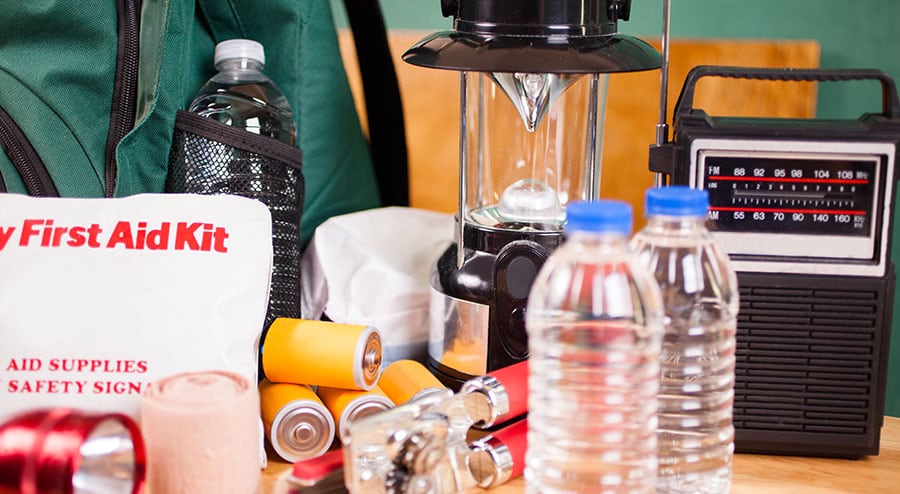
You may need to survive on your own for a considerable amount of time after a disaster. To help you accomplish this task, you’ll need a stocked disaster preparedness kit. Crucial items to store in your kit include:
- Food and water: a three-day supply of non-perishable foods such as canned goods, and a three-day supply of water consisting of one gallon of water per person per day. Be sure to include cooking utensils (can openers, for example).
- A flashlight with extra batteries.
- A portable battery-operated television or radio with extra batteries.
- A first aid kit and first aid manual. Be sure to include related medical items such as eyeglasses, contact lens cleaning solution, hearing aid batteries, and prescription medications.
- Toilet paper.
- A whistle.
- Matches in a waterproof container.
- A multi-purpose tool.
- Extra sets of keys.
- A cellphone charger.
- Cash, copies of identification cards, and credit cards
- At least one complete change of clothing per person
If you live in a cold climate, your disaster preparedness kit should include, in addition, cold-weather items for every household member, including:
- Standard items: a pair of pants, a long-sleeved shirt, and a pair of sturdy shoes.
- Outerwear: a coat, mittens or gloves, a scarf, and a hat.
- A sleeping bag or warm blanket
Get Your Vehicle Ready

Certain disaster situations necessitate evacuating in a vehicle. If an evacuation seems probable in the near future, keep a full tank of gas in your automobile. Along with your disaster preparedness kit, you should also pack:
- Flares
- Jumper cables
- A tire pressure gauge
- A spare tire
- Maps
Find Your Area’s Evacuation Routes and Shelter Locations
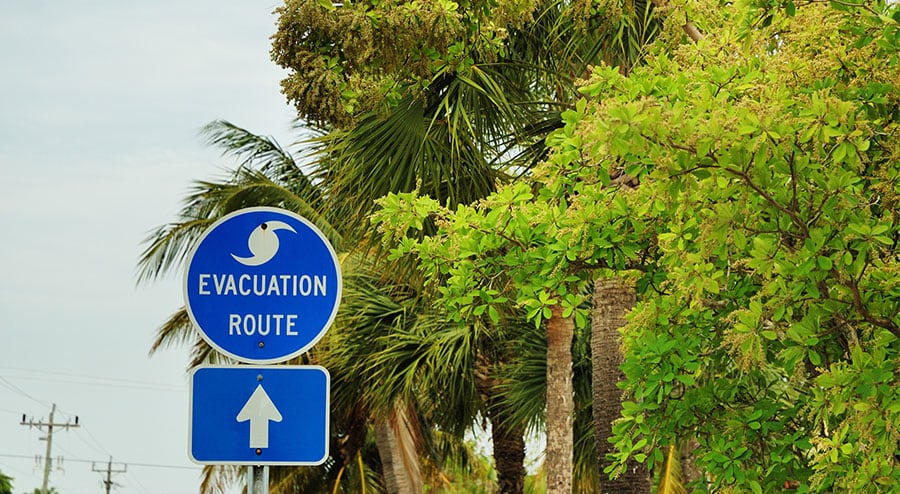
In the event of an evacuation order, you’ll need to know where to go and how to get there. So study your area’s evacuation routes and familiarize yourself with them before disaster strikes. (You can access evacuation information for every state at http://www.ibiblio.org/rcip/evacuationroutes.html.) Department of Transportation websites for individual states also typically provide a wealth of information about evacuation routes, and you can learn information about national highway and road closures during or after a disaster by dialing 511 (this number works for cell phones and landlines).
In addition to finding evacuation routes, determine plausible shelter locations where your family can be comfortable, such as:
- Hotels
- A friend’s or relative’s home that is a safe distance away from your house
- Evacuation shelters
Strive to practice evacuating your home at least twice each year. Every household member should also know all of the ways to escape your home, such as the front door, the back door, or even the bathroom window. Post a diagram of escape options in a prominent area of your home.
Sign Up for Emergency Alerts and Information

Sign up for wireless emergency alerts, WEA, on your cellphone. These are emergency messages transmitted from approved government alerting authorities through your mobile carrier. Containing no more than 90 characters, these alerts resemble text messages. The National Weather Service, NWS, sends WEA for:
- Tsunamis
- Hurricanes, typhoons, dust storms, and extreme wind
- Tornadoes and flash floods
If you carry your cellphone with you everywhere, this method is likely the best way for you to learn about potential disasters in your area (most newer cellphones are WEA compatible). Checking social media platforms is also smart. However, since it’s always possible that you’ll lose your internet connection during an emergency, it’s a good idea to have an emergency radio in your home as a backup.
Determine How You’ll Reconnect with Friends and Family Members

After a disaster strikes, you’ll need to find a way to let family members and friends know you’re safe. Since cell towers might not work, consider designating an out-of-area emergency contact to have loved ones to check in with. You should also create emergency contact cards for every person in your household in case you’re separated during a disaster. These contact cards need to include each family member’s:
- Name
- Phone number
- Home address
Contact cards should also contain the names and phone numbers of people to call if an emergency occurs.
Address Special Family Considerations
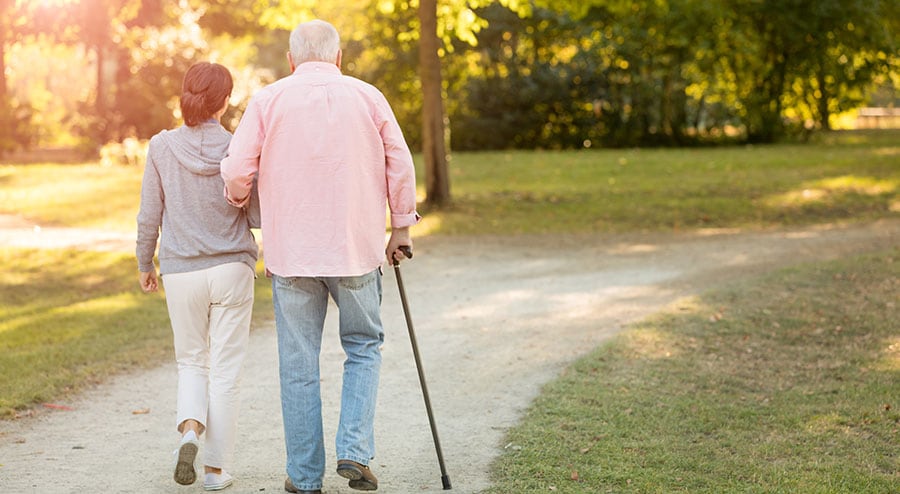
Depending on the ages of household members, you might need to address special considerations.
Babies, toddlers, and children: if you’re the parent of one or more children, you may need add the following to your preparedness kit:
- Formula
- Bottles
- Pacifiers
- Bibs
- Diapers
- Toys
Seniors: If you’re a senior or the caretaker of one, keep support items in a designated place so they can be found quickly. Consider including:
- Canes
- Walkers
- Wheelchairs
Also: be sure to label assistive devices with identifying names, addresses, and phone numbers
Prepare Your Pets

When disasters occur, you should never leave your pets at home. If you have one or more furry friends, create a pet disaster kit. Include items such as:
- Leashes, harnesses, and carriers
- Portable pet beds and toys
- Pet food, bowls, and drinking water
- Current pictures of you with your pet
- Information about feeding schedules, behavioral issues, medical problems, and your veterinarian in the event you need to board your pets at a facility
Acquire Valuable Emergency Skills
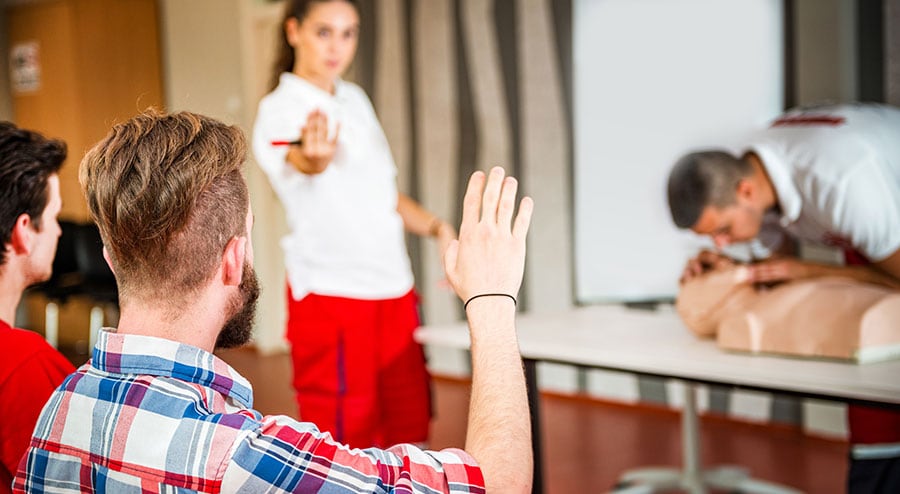
When disasters take place, knowing valuable emergency skills might save your life or the life of a loved one. To lessen the negative impacts of a potential disaster, ensure you know how to:
- Use a fire extinguisher
- Perform CPR
- Perform the Heimlich maneuver
- Apply a tourniquet
- Shut off the utilities at your home
The American Red Cross offers a variety of classes to help you acquire disaster preparedness skills. Local fire departments also sometimes provide the public with free CPR and fire extinguisher training.
No one wants to experience a disaster first-hand. Proactively preparing for a disaster, however, can mean the difference between being safe and suffering harm. Preparation and education will increase your odds of remaining safe and calm during an emergency, and will ensure that you and your loved ones have the best possible outcome.


